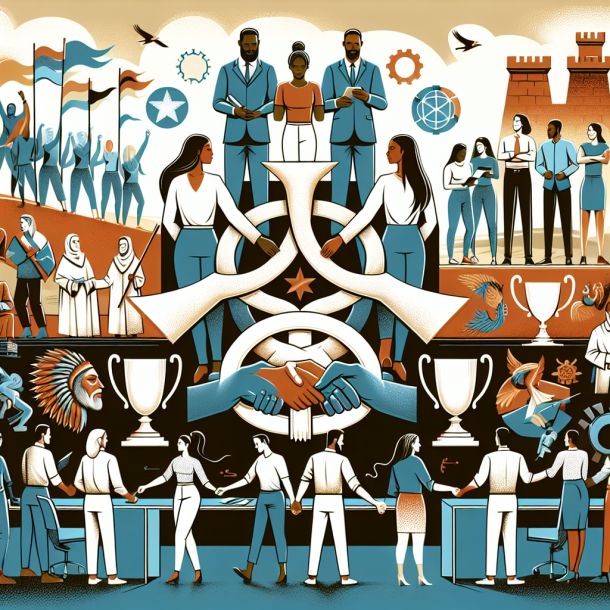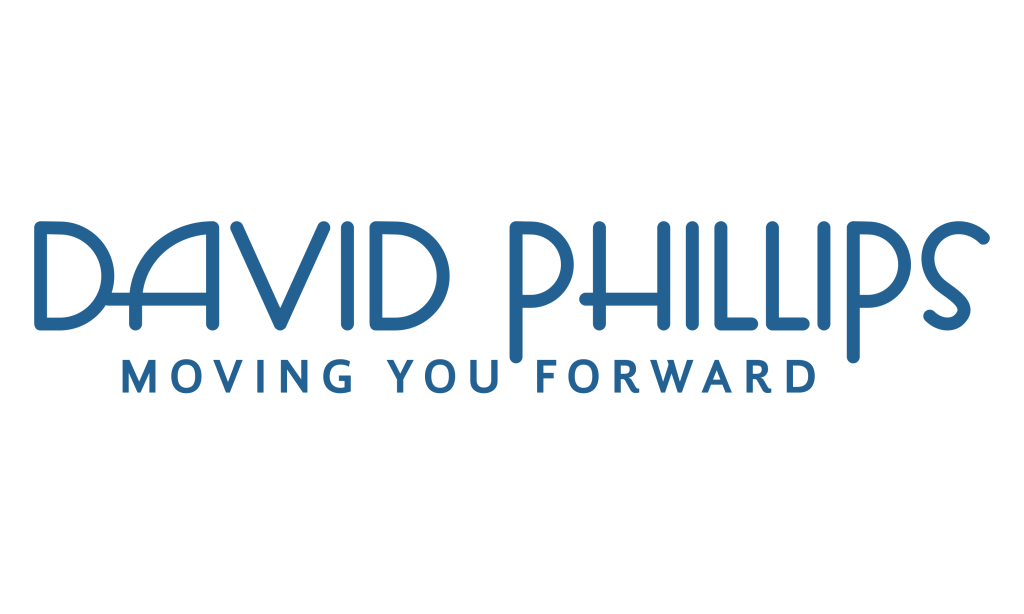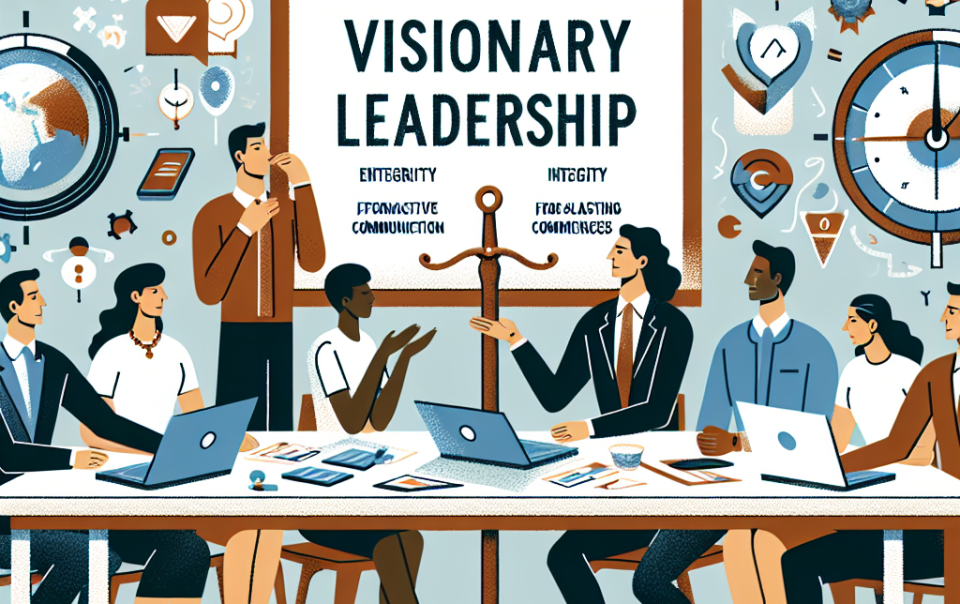
Empathy and Eleanor Roosevelt: Discover How to Use Your Head and Heart to Master Relationships
Understanding Rational Self-Management
Imagine leading a team through a high-stress project. Deadlines are tight, and tensions are rising. In such moments, rational self-management becomes your best ally. It’s not just about controlling your emotions but understanding them and using that insight to guide your actions.
Rational self-management involves self-control and mindfulness. Leaders who master this balance can make decisions that are both thoughtful and effective. For instance, Satya Nadella, CEO of Microsoft, transformed the company culture by prioritizing empathy and rational thinking, leading to unprecedented growth and innovation.
By developing self-awareness, you can better manage your responses. Recognizing when you’re feeling overwhelmed allows you to take a step back and approach problems with logic and reason. This not only enhances your emotional intelligence but also sets a positive example for your team.
Emotional Intelligence in Interpersonal Relationships
Emotional intelligence (EI) is the cornerstone of effective leadership. It involves understanding and managing your own emotions while also recognizing and influencing the emotions of others. High EI leaders build stronger, more resilient teams.
A great example is Oprah Winfrey, whose interpersonal skills have allowed her to connect deeply with audiences and employees alike. Her ability to show genuine compassion and kindness fosters a supportive and collaborative work environment.
Research shows that teams led by emotionally intelligent leaders report higher levels of job satisfaction and performance. By practicing empathy, you can enhance relationship management and create a workplace where everyone feels valued and understood.
Balancing Logic and Empathy
Balancing logic and empathy is essential for thoughtful leadership. While rationality ensures decisions are well-founded, empathy ensures they are human-centered.
Consider the dilemma of implementing cost-cutting measures. A purely logical approach might focus solely on financial metrics, but integrating empathy means considering the impact on employee morale and well-being. This balanced approach leads to more sustainable and ethical decisions.
Leaders who master this balance utilize cognitive control to weigh both facts and feelings. This not only improves decision-making but also builds trust and respect within the team. As Daniel Goleman emphasizes, “Empathy is about finding echoes of another person in yourself.”
Self-Discipline Through Thoughtful Analysis
Self-discipline is more than just resisting temptations; it’s about making deliberate choices that align with your goals and values. Thoughtful analysis plays a crucial role in developing this discipline.
By regularly reflecting on your actions and decisions, you can identify patterns and areas for improvement. For example, a leader might track their responses during meetings to ensure they remain calm and composed, enhancing their emotional balance.
This practice of self-reflection fosters discerning decision-making. It allows leaders to stay focused on long-term objectives, avoiding impulsive reactions that could disrupt harmony and effectiveness within the team.
Building Trust with Emotional Connection
Trust is the foundation of any successful team. Building it requires more than just consistent actions; it involves creating emotional connections with your team members.
When leaders show genuine empathy and understanding, they signal that they care about their team’s well-being. This emotional connection fosters loyalty and a willingness to go the extra mile. For instance, Howard Schultz of Starbucks is renowned for his empathetic leadership, which has cultivated a strong, committed workforce.
Additionally, transparency and open communication enhance relationship management. By sharing both successes and challenges, leaders build a sense of shared purpose and mutual respect, essential components for lasting trust.
Decision-Making with Clarity and Compassion
Effective decision-making requires both clarity of thought and compassion for those affected by your choices. This dual approach ensures that decisions are not only effective but also considerate.
Take, for example, the decision to restructure a team. A leader who combines logic with empathy will carefully consider the business needs while also providing support and clear communication to those impacted. This approach minimizes disruption and maintains morale.
Implementing thoughtful decision-making involves gathering diverse perspectives and weighing the emotional and practical implications. Leaders like Jacinda Ardern have exemplified this by making decisions that prioritize both efficiency and the well-being of their citizens.
Managing Personal Goals with Strategic Thinking
Managing personal goals requires strategic thinking that aligns with both your aspirations and your team’s objectives. It’s about setting clear, achievable targets while remaining adaptable to changing circumstances.
Leaders who practice strategic thinking can prioritize tasks that advance their goals without compromising on values like kindness and understanding. For instance, Elon Musk sets ambitious goals for his companies while fostering a culture of innovation and resilience.
By integrating mindfulness and self-awareness into goal-setting, leaders ensure their personal growth complements their professional responsibilities. This holistic approach promotes balance and sustained success.
Fostering Teamwork with Heartfelt Leadership
Heartfelt leadership is about inspiring and motivating your team through genuine care and passion. It creates an environment where teamwork thrives and individuals feel empowered to contribute their best.
Leaders like Sheryl Sandberg have demonstrated how heartfelt leadership can drive collaboration and innovation. By valuing each team member’s input and showing appreciation, they build strong, cohesive teams.
Encouraging open communication and mutual support fosters teamwork and enhances relational intelligence. This not only improves productivity but also creates a positive and inclusive workplace culture.
Navigating Conflict with Empathy and Reason
Conflict is inevitable in any team setting, but navigating it effectively requires a blend of empathy and reason. Understanding the underlying emotions while maintaining a logical perspective leads to resolutions that satisfy all parties involved.
For example, during a disagreement over project priorities, a leader who listens empathetically can uncover concerns and motivations, while using logic to find common ground and practical solutions. This approach minimizes resentment and fosters a collaborative spirit.
By addressing conflicts with both emotional sensitivity and rational analysis, leaders enhance their interpersonal skills and promote a harmonious work environment. This balanced approach ensures that conflicts become opportunities for growth rather than sources of division.
Cultivating Personal Growth and Social Harmony
Cultivating personal growth alongside social harmony creates a balanced and fulfilling leadership journey. It involves continuous self-improvement and fostering an environment where everyone can thrive.
Leaders who invest in their personal development gain the wisdom and discernment needed to guide their teams effectively. Engaging in activities like mindfulness meditation or professional coaching can enhance emotional intelligence and cognitive control.
Promoting social harmony within the team through inclusive practices and empathy ensures that diverse perspectives are valued. This not only strengthens team cohesion but also drives innovation and collective success.
Conclusion
Empathy is more than just a soft skill; it’s a fundamental component of effective leadership. By balancing rational self-management with emotional intelligence, leaders can create environments where both individuals and teams flourish. Whether it’s making thoughtful decisions, building trust, or fostering teamwork, empathy ensures that leadership is both compassionate and strategic.
As you embark on your leadership journey, remember that developing empathy requires continuous effort and self-awareness. Embrace opportunities for personal growth, seek feedback, and practice active listening. By doing so, you’ll not only enhance your own emotional intelligence but also inspire those around you to achieve their best.
Ready to take your leadership skills to the next level? Start by integrating empathy into your daily interactions and watch as your team transforms into a more cohesive, motivated, and successful unit.
What strategies have you found effective in balancing empathy and logic in your leadership role? Share your experiences in the comments below!



